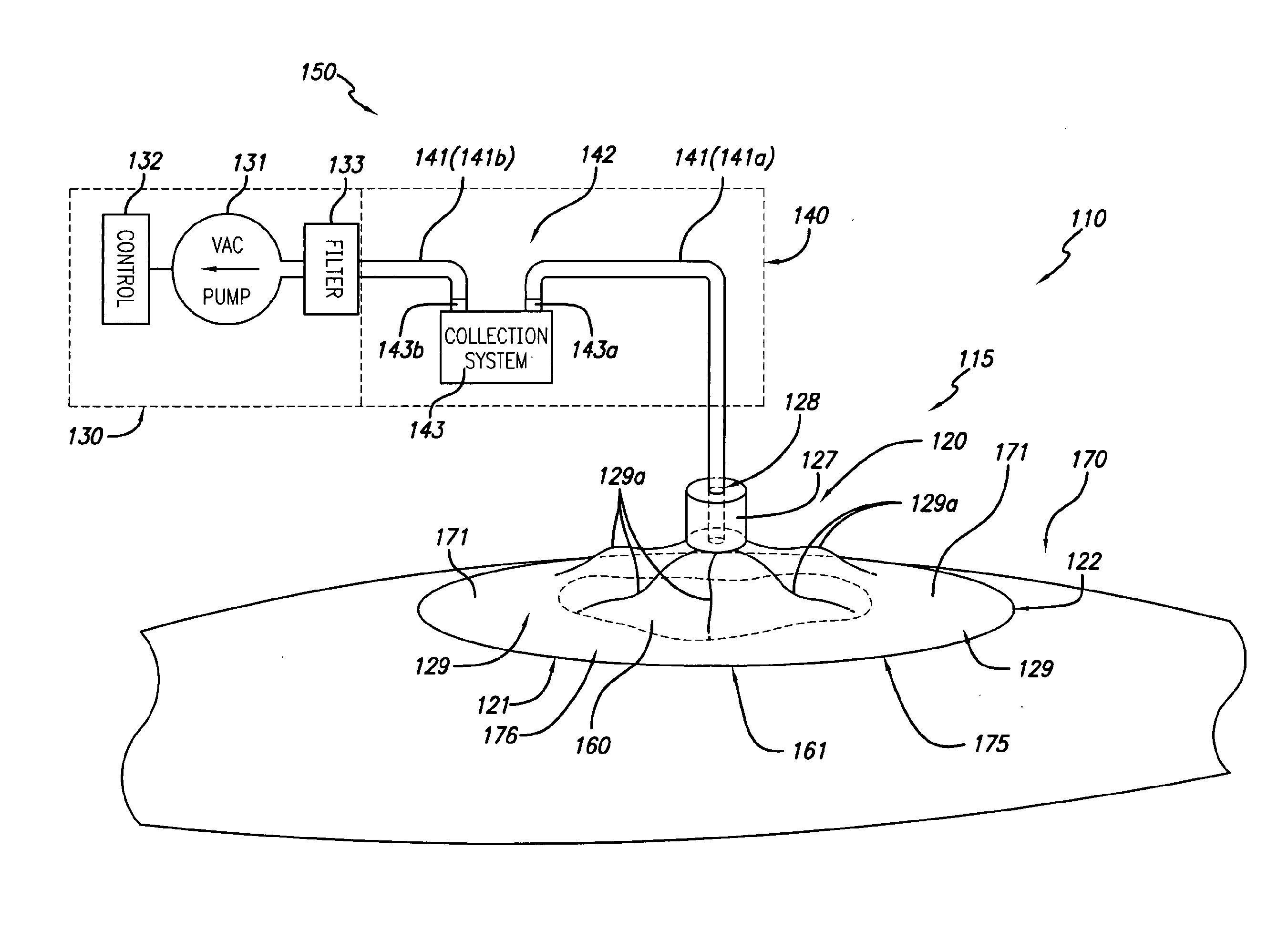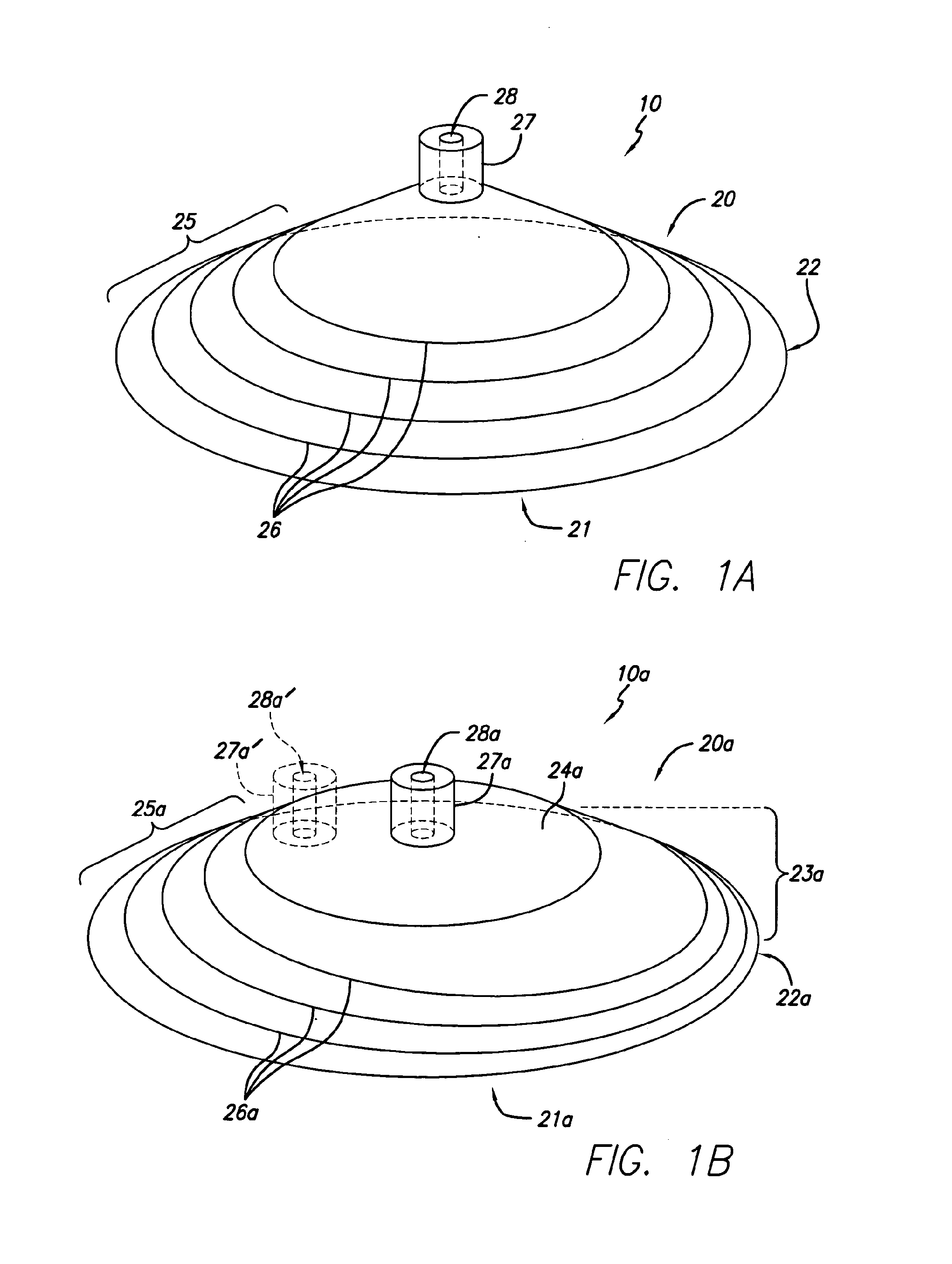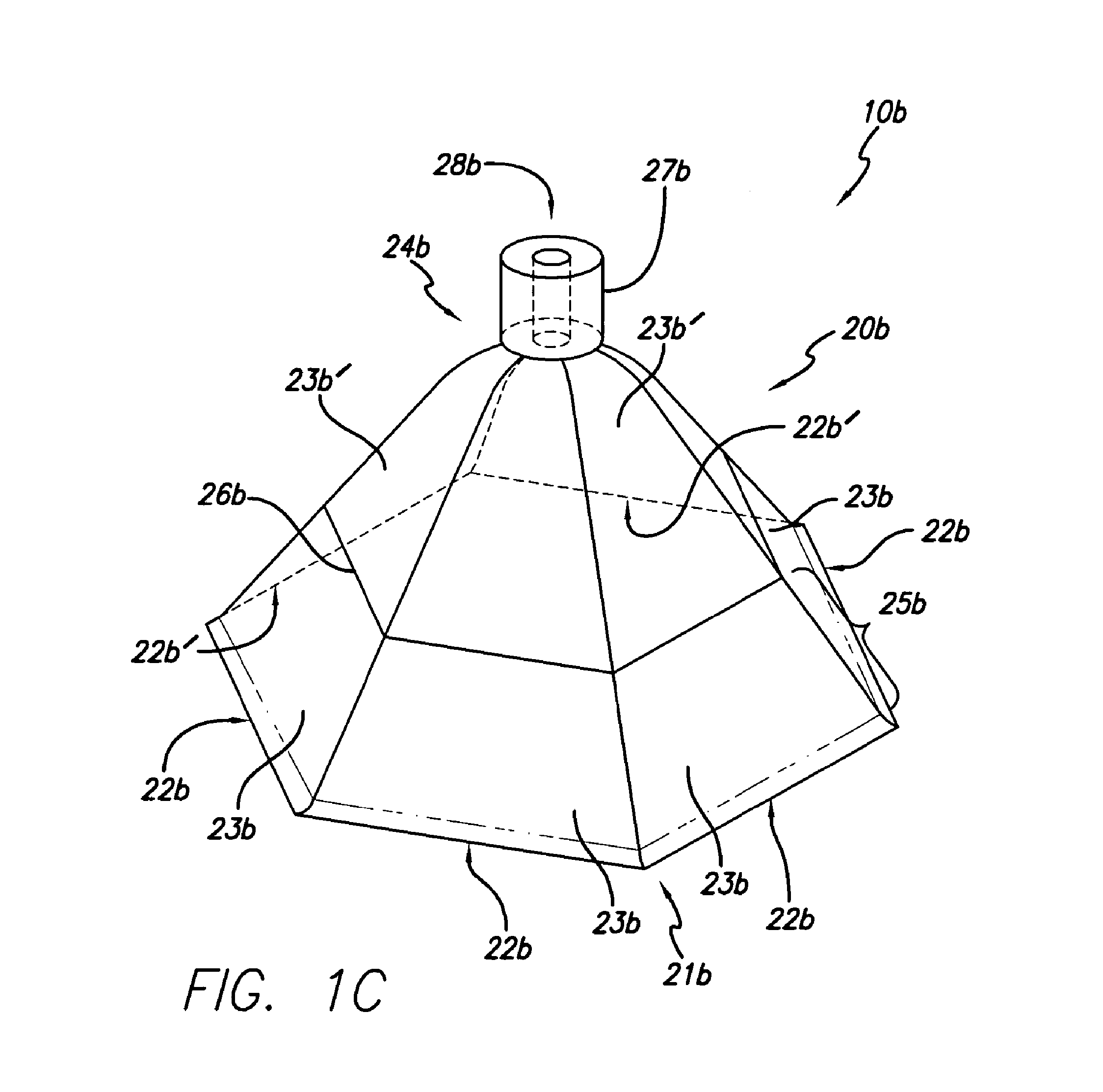Reduced pressure treatment system
a treatment system and pressure reduction technology, applied in the field of wound treatment, can solve the problems of pain, discomfort and pain for patients, separate expense of collection devices in the treatment of reduced pressure wounds, etc., and achieve the effects of reducing bacterial density, reducing pain, and improving healing speed
- Summary
- Abstract
- Description
- Claims
- Application Information
AI Technical Summary
Benefits of technology
Problems solved by technology
Method used
Image
Examples
Embodiment Construction
[0057]In accordance with one embodiment of the present invention, a wound treatment appliance is provided for treating all or a portion of a wound by applying reduced pressure (i.e., pressure that is below ambient atmospheric pressure) to the portion of the wound to be treated in a controlled manner for a selected time period in a manner that overcomes the disadvantages of currently existing apparatus. One embodiment is a wound treatment appliance 10 that is comprised of the fluid impermeable flexible overlay 20 illustrated in FIG. 1A and reduced pressure supply means, which are described in more detail below. In this embodiment, the flexible overlay 20 has an approximately elongated conical shape, having an opening 21 with an opening perimeter 22 adjacent to the opening 21 (at the base of the elongated conical shape) that is approximately elliptical in shape. The flexible overlay 20 illustrated in FIG. 1A is in its natural shape, as it exists prior to being applied to a patient for...
PUM
 Login to View More
Login to View More Abstract
Description
Claims
Application Information
 Login to View More
Login to View More - R&D
- Intellectual Property
- Life Sciences
- Materials
- Tech Scout
- Unparalleled Data Quality
- Higher Quality Content
- 60% Fewer Hallucinations
Browse by: Latest US Patents, China's latest patents, Technical Efficacy Thesaurus, Application Domain, Technology Topic, Popular Technical Reports.
© 2025 PatSnap. All rights reserved.Legal|Privacy policy|Modern Slavery Act Transparency Statement|Sitemap|About US| Contact US: help@patsnap.com



